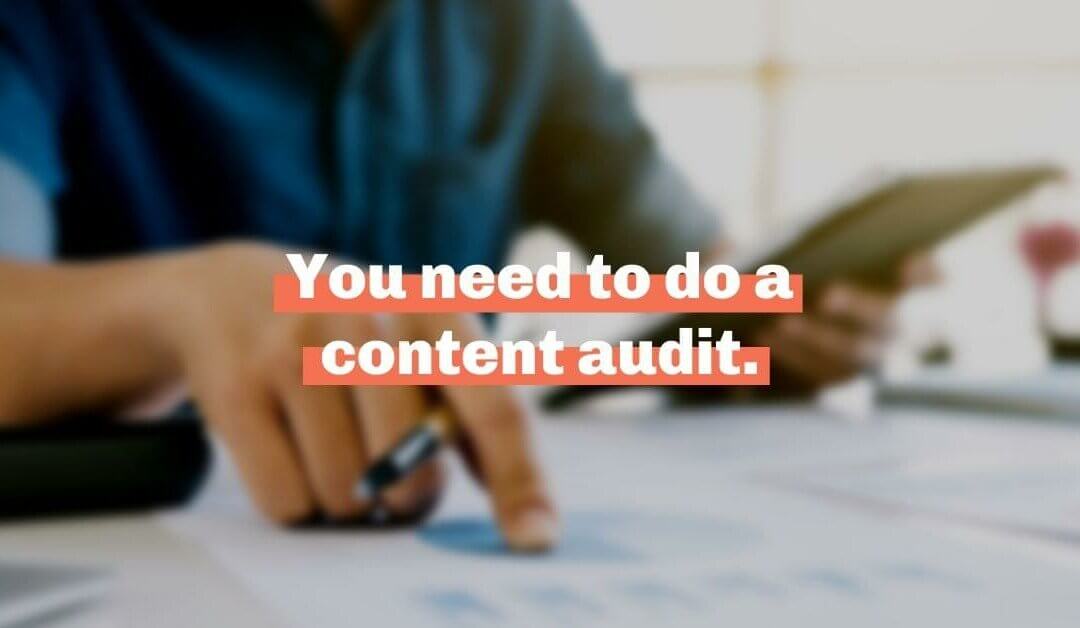
You need to do a content audit
One of the first projects our Chief Strategist, Ian, completed as a young marketer was a how-to guide for MySpace. It was a PowerPoint. And he printed it to show his team. (I think this is where the kids say something like, “Ok, boomer.”)
The simple reality is that we’ve been at this digital marketing game for a long time.
And over the last 15 years, we’ve created a LOT of content.
Blogs, infographics, social media, web pages, articles, thought leadership…if you’re anything like us, you’re sitting on a treasure trove of great material that you have already created.
Yet our impulse is still to create something new. To come up with the next great idea. To start over. And start over. And start over again.
Why?
Why do more work when you can, instead, do more efficient work? And why reinvent the wheel when you have a perfect circle within arm’s reach?
The reality is that most of your audience doesn’t remember your content.
Sad, but true.
And if your audience is growing (we’d love to help you do this, btw), then the new people on your email list weren’t around to receive that awesome message three years ago. They didn’t see it at all.
At every conference we’ve ever been to, the “experts” tell us one thing, over and over: Create engaging content. We always laugh at that because, duh, but also, they’re right. Good content is marketing magic—it’s why we built a storytelling agency. But we’d like to add to their advice: Create engaging content. And keep using the content you’ve created.
If you’re looking for easy, accessible content to share, chances are you already have it.
So how do you make use of the amazingness at your fingertips?
You need to do a content audit.
Spend time evaluating the material you already have, and start answering these questions:
- What is still working for you? These are the pages that are still getting lots of traffic and the pieces that are still getting used, so make sure the data and stories presented are accurate! Also, make sure these pages and pieces have logical next steps—where does a donor or prospect go after reading it?
- What ISN’T working? In the wise words of Marie Kondo, if a piece of content isn’t bringing you joy anymore, it might be time to let it go. Or rewrite it. Or start over.
- What could be working better? This is our favorite question! What are the stories in your arsenal that are interesting but unread? What blogs still work, especially if you were to spend five minutes updating them? What long-form articles could be parsed into a full month of social content? What can you re-share, re-post, or re-work?
As you approach that last question, here are a few easy ways to get started:
- Throwback Thursday. Post an old story in its entirety—no extra work required!
- Repost your long-form. With well-researched long-form content, take the time to edit and update the information presented. Then repost the blog or article with an “updated” date—voila: new content. The SEO crawlers will love you.
- Parse a blog into social. A full blog might not be super relevant anymore, but chances are high that you could find one or two sound bites that might be great social posts! As we always tell young writers, plagiarize yourself! If you’ve done the work, you can reuse it across channels!
- Milk a piece for all its worth. Did you write a great impact report? Awesome. Now post it online. Pull five social posts out of the content. Turn it into a listicle. Independently share the infographics. Work smarter, not harder. You have so much existing content available to you!
You can breathe life into old content—and Swell+Good is here to help. We conduct content audits for many of our clients, helping them identify what’s working, what’s not, and what could be. Then we help them turn the materials they have into a robust content calendar that is bursting with powerful stories.
Want to learn more? Shoot us an email, we would love to talk to you!

